Upgrading to a Gooseneck Horse Trailer: Top Things to Know
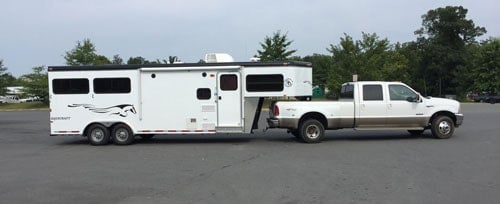
But, what if a bumper pull trailer isn’t quite gonna cut it? You need a bit more space… room for sleeping quarters… or you need to haul more than three horses…
Then, maybe you’re ready to enjoy the many benefits of a larger gooseneck horse trailer. Maybe you’re also a bit nervous about handling your new rig. We get it… gooseneck horse trailers can be a bit intimidating because of their size.
But if you have the right know-how, there’s no reason a gooseneck horse trailer can’t work extremely well for your horsey needs. Here’s a rundown of some information you may need if you are ready to buy your first gooseneck horse trailer.
“Graduating” from a Bumper Pull
Yes, bumper pull trailers (also called “tag-a-long trailers”) can be great if you are a new horse trailer owner. Besides the cost and ease of hauling, they also work well with a larger variety of tow vehicles.
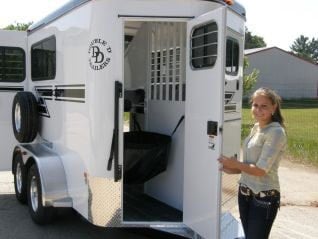
Making the leap to your first gooseneck horse trailer is going to open up some important new doors for you. First of all, you will be adding extra space that can be used for a dressing room or even a full living quarters.
This means you’ll get much more practical use out of your trailer. Plus, you won’t need to pack the tents and air mattresses for your next overnight trail ride or show.
You’ll also have more capability when it comes to the number of horses you can transport. While bumper pull trailers work great for two or three horses, you’ll really need a gooseneck if you want to haul four or more animals at once.
Let’s Talk about Towing a Gooseneck Trailer
Towing your new gooseneck trailer is a little different from your older bumper pull model. First — and most importantly — you’ll want to make sure you have a properly equipped tow vehicle.
A bumper pull trailer can be towed with an SUV, but a gooseneck trailer will require a pick-up truck so the gooseneck hitch can be mounted in the truck bed. The size and tow capability of your truck with depend on things like the weight of the trailer, the tongue weight, and the cargo weight limits.
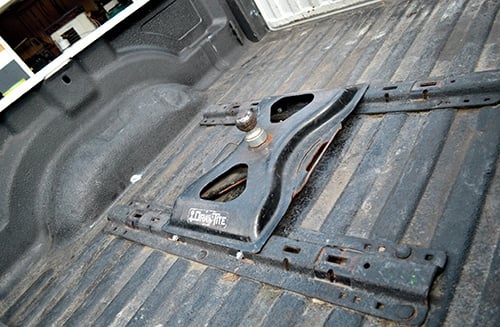
With a bumper pull trailer, the wind provides more resistance. Brad explained, “It seems like the air goes up over the cab, down into the bed, and then hits the front of the trailer like a big parachute.”
To combat this issue, Double D Trailers uses a “V” nose design on most of our bumper pull trailers to offset this problem and increase fuel mileage. With a gooseneck trailer, the wind flows smoothly over both your vehicle and the trailer without getting trapped. So, the towing may actually be smoother during high speed travel.
For normal road speeds of 55-60 MPH, you will not notice a large difference in towing between a gooseneck and bumper pull trailer.
Finally, hitching up your gooseneck trailer is a bit different from your bumper pull trailer. Once again, it can be done with less hassle…
As you are backing up to your trailer, simply look through your truck’s rear windows to watch the coupler line up with the hitch ball. This is much easier than blindly trying to line up the ball and coupler with a bumper pull trailer.
Top Benefits of a Gooseneck Horse Trailer
Ok… so far, we have more space, smoother high-speed travel, and easier hitching. What are some other benefits you’ll find on a gooseneck trailer compared to a bumper pull?
So glad you asked!
A gooseneck trailer has its wonderfully quirky name because of its star feature — the “gooseneck.”
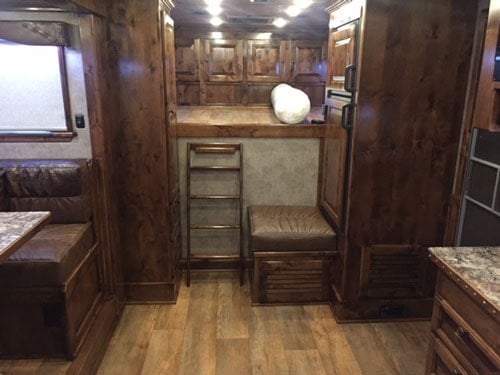
Or, go all out and fill your gooseneck trailer with a full set of living quarters. The contents of your living quarters horse trailer can range from simple to luxurious depending on your budget and desires.
Install a kitchen area, entertainment system, hardwood cabinets and a full bathroom complete with shower stall and toilet. The options are unlimited when it comes to designing your own custom living quarters trailer.
A Few Words of Caution for Gooseneck Trailer Buyers
We’ve spent a lot of time talking about the wonderful benefits of gooseneck trailers, but what about the fine print?
First of all, make sure you buy a gooseneck trailer with a “V” nose at the front. (All Double D Trailers have this feature.) Brad shared, “We’ve seen many folks break the rear glass of their tow vehicle by jack-knifing their trailer while in reverse.”
This happens when the front corner of a flat-faced gooseneck trailer comes into contact with the rear windows of your truck. A “V” nose gooseneck trailer eliminates this problem and allows you more flexibility when maneuvering your trailer.
Next, pay attention to the height of your truck as compared to your trailer. Newer truck models from popular manufacturers like Ford, Chevy, and Dodge are increasing the height of their truck beds. This, in turn, makes horse trailer manufacturers shorten the head room over the gooseneck to work with the latest truck models.
Sometimes, people with older trailers (including most any brand) purchase one of these newer, taller trucks. Then, they wonder why their new tow vehicle is too tall to fit under their older trailer.
They end up having to jack up the front end of the gooseneck trailer to clear the truck rail and tail gate. But, then the trailer doesn’t run level and this shifts much more weight to the back tire and axle. This significantly increases the chances of a tire blow-out for being overloaded. Your trailer can also suffer from axle damage and bending.
The moral of the story is this… if you are purchasing a new tow vehicle, or purchasing and older/used trailer with a newer vehicle… buyer beware!
Should You Buy a Gooseneck or a Bumper Pull Trailer?
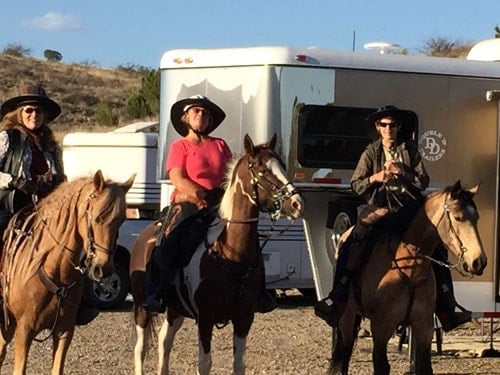
Brad summarized, “I have no problem recommending a bumper pull trailer for a client who wants to haul one to three horses.” This kind of trailer can work really well for folks who aren’t planning to camp or sleep in their trailer.
Just remember to always double check that your tow vehicle is adequately matched to whatever type of trailer you plan to haul. It needs to be well-equipped to manage your trailer’s tongue weight and gross towing capacity.
If you have any questions about buying a gooseneck horse trailer, feel free to contact Brad here.

